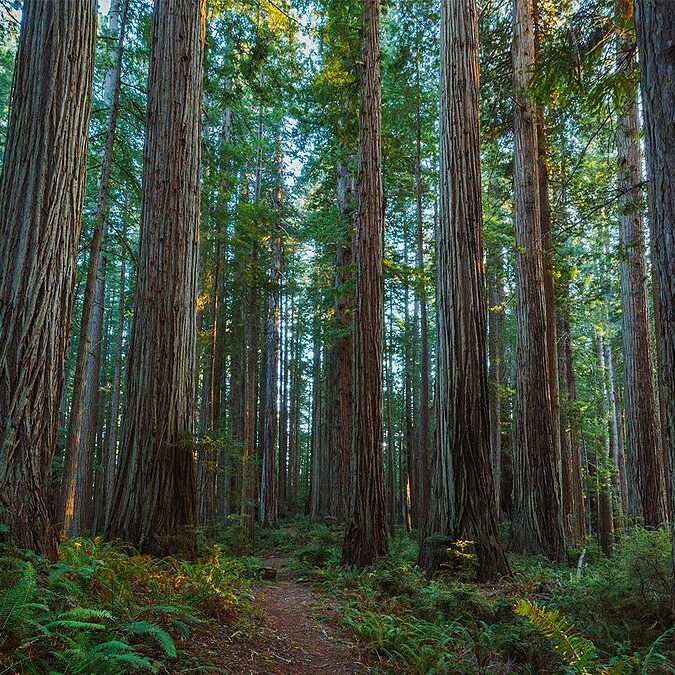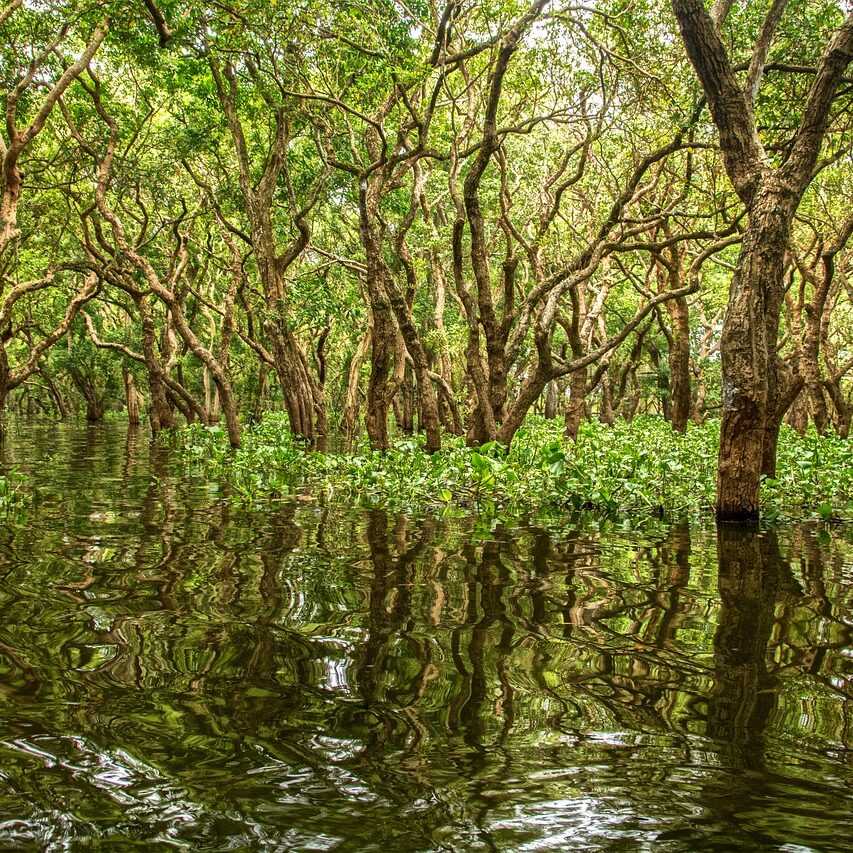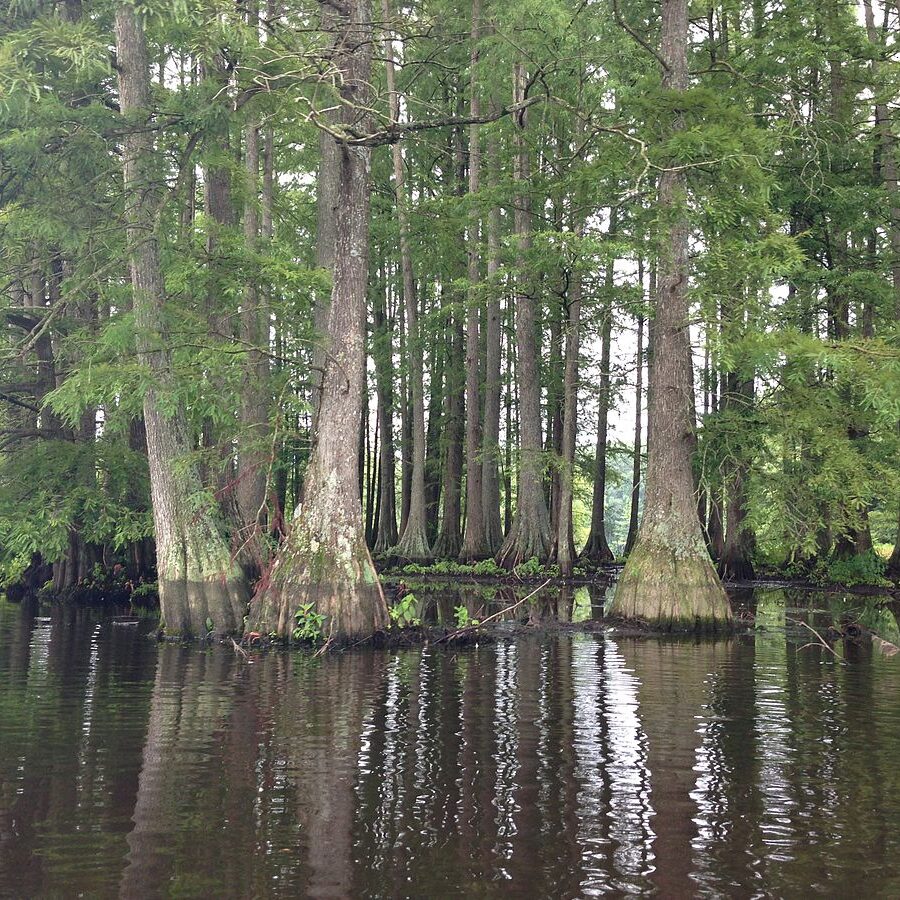uncover
What is the longleaf ecosystem?
The longleaf pine forest
What exactly is a forest? It's a large area dominated by trees. A forest is usually made up of just a few types of trees or species depending on climate, soil, elevation, and other environmental factors. Guess which species of tree is dominant in the longleaf pine forest? Hopefully, you guessed the longleaf pine tree! The longleaf pine tree is considered the keystone tree species for this forest type and it determines a lot about the forest ecosystem. Based on what we learned in the Question stage about the longleaf pine tree, let's explore what makes the structure of the longleaf pine forest different.
Compare the two photos of forests below. What is similar about them? What is different?


You may have noticed that the two forests have similarities, but they also have big differences! Photo #1 is of the Amazon rainforest; Photo #2 is of a longleaf pine forest. You may have noticed that the longleaf pine forest has a high canopy (where the branches and leaves or needles block out the sky), a more open understory (the layer of smaller trees), and a spacious and sunny forest floor compared to the Amazon rainforest. These differences are also illustrated in the two diagrams below. The 'structure' of the longleaf pine forest is important for a healthy ecosystem because many of the plants and animals that live in this forest are found on the forest floor and depend on the space and sun for suitable habitat.


The longleaf pine ecosystem
What exactly is an ecosystem? It's the community of plants, animals, and other organisms or biotic elements, that exist and interact with the non-living physical and chemical features of the environment, or its abiotic elements.
A forest ecosystem is this same community set in a place that is dominated by one or a few specific or keystone tree species - here, the longleaf pine tree! So what are the living (biotic) and non-living (abiotic) elements that make up the longleaf pine ecosystem?!

Comparing forest ecosystems
The longleaf pine tree is the keystone tree species in the longleaf pine ecosystem. This tree species shapes all of the biotic (living) and abiotic (non-living) elements of the system. Without this tree, the ecosystem would change drastically (also known as ecosystem succession).
There are other well-known types of forest ecosystems that are defined by different keystone tree and plant species. These species create and support other unique communities of plants and animals that depend on other abiotic (non-living) conditions.
Have you heard of any these other trees or ecosystems? How do you think they compare and contrast to the longleaf pine forest?

Redwoods
The redwoods are the tallest trees in the world, found in southern Oregon and northern California. These huge trees thrive in specific conditions that create an ecosystem that extends far below the ground and up into the high canopy of these forests.

Mangroves
Mangroves are coastal forest ecosystems that grow in salt or brackish water. The tangled root systems of the trees below the water surface provides shelter for many aquatic animal species. These forests are valuable for protecting land from storms.

Kelp Forests
Kelp forests are found underwater along the Pacific coast of the US and other places around the world. Kelp is not actually a plant but extremely large brown algae, and many different species of kelp make up kelp forests. These forests support a huge diversity of sea life.

Bald Cypress
If you live near the longleaf pine ecosystem, you may have seen these trees as well! Bald cypress trees are found in swamps, or low-lying wet areas in the southeastern US. These trees support the swamp ecosystem by creating extensive habitat.